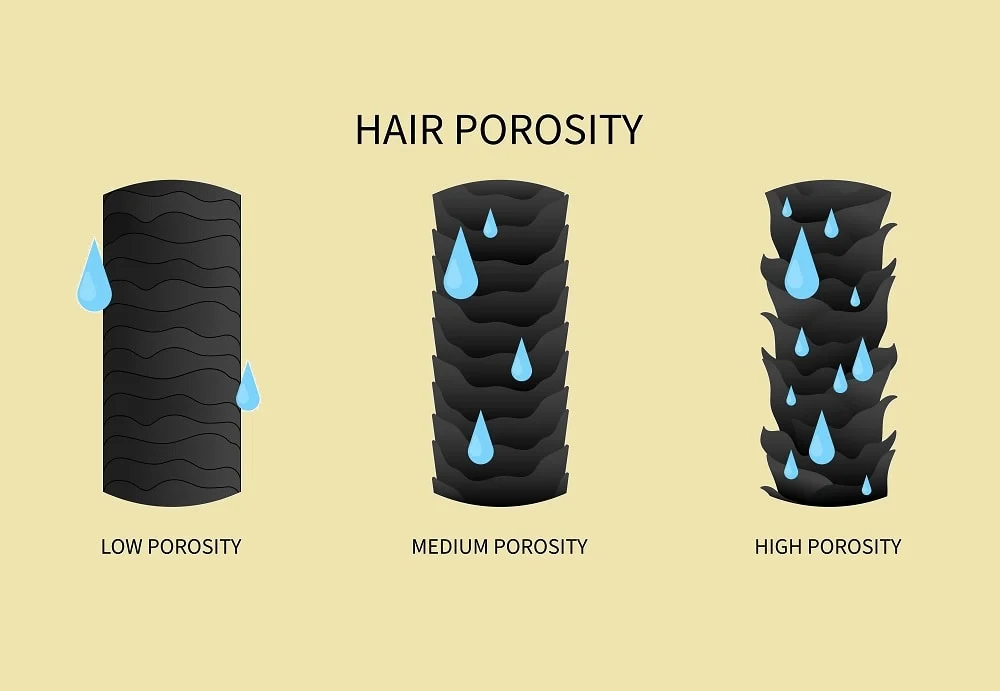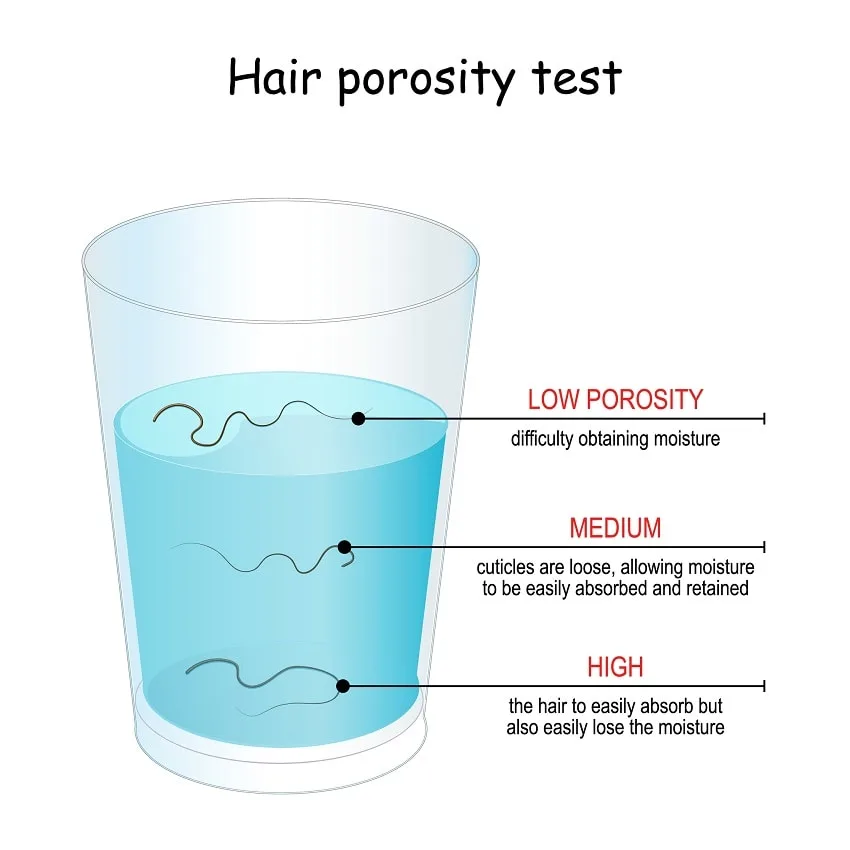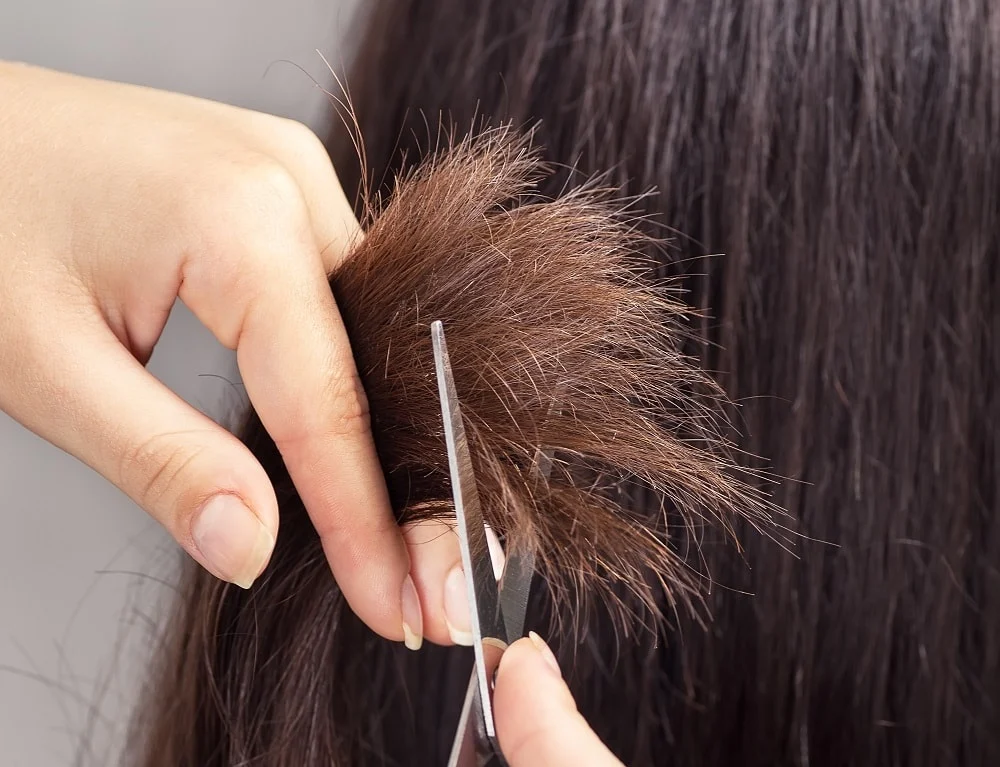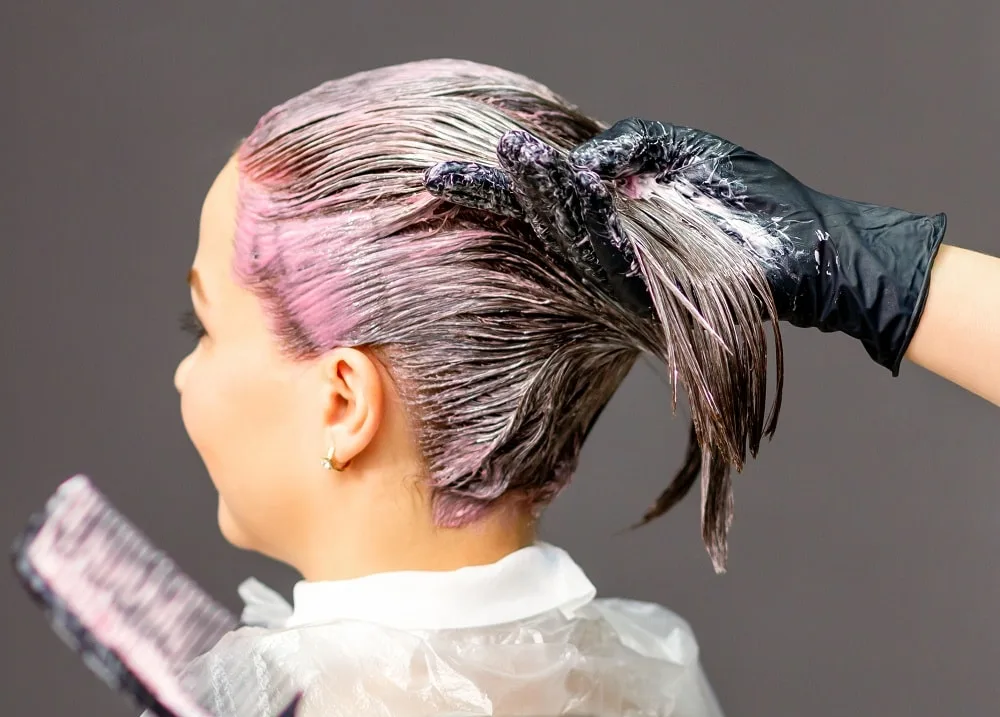Coloring hair can be a hefty and expensive process. However, is your hair color fading faster than you’d like? Does it seem like you have to color your hair at least once a month to keep the shade you want?
Porous hair may be the culprit. Coloring porous hair is a struggle; depending on which type of hair you have, leaving color on for longer may damage it even more.
So, what is porous hair? Which is worse, high or low porosity? In this article, you’ll learn about coloring porous hair and how to keep color on longer.
What Is Hair Porosity, and What Does it Mean?

Hair ranges from low to high porosity; some people naturally have porous hair, whereas others don’t. Hair porosity is defined by how much moisture your hair absorbs. Hair absorbency relies on many factors, including texture, history, styling, and environmental damage.
The best level of porosity means that you can immediately retain the color you want, and it stays in your hair for extended periods without fading. High and low hair porosity determines how well your hair absorbs color and how long it stays vibrant.
Now that you know what porosity is, how do you know how porous your hair is? While there are ways you can determine how porous your hair is, we’ll get into that later. Let’s dive into the differences between low and high porosity.
High Porosity Hair
Porous hair is not just about what you’ve done to it but your hair type. For example, high porosity hair is mainly found in fine, curly, or textured hair. Having high porosity hair means it’s easy for color treatment and other hair products to absorb in your hair.
However, having too high of porous hair, you may see the color fade quicker – which is why you may dye your hair monthly.
Having highly porous hair may seem exciting because it means that your color will show immediately. However, it’s not good because the color and oils penetrate too quickly, resulting in further damage.
The causes of highly porous hair are:
- Over-processing and bleaching
- Saltwater or chlorine
- Heat treatments
- Permanent straightening treatments
Luckily there are ways to fix this, as you’ll learn later.
Low Porosity Hair
Have you noticed that your hair isn’t as vibrant as your expected outcome when depositing color? This may signify low porous hair. Low porous hair has the opposite problem of high, meaning your hair cannot absorb moisture and color.
People with straight, thick, or volumized hair have a low porosity problem because these hair types are commonly found with fewer pores in your hair’s outer protective layer. When coloring low-porosity hair, leaving the color on longer will help penetrate into the thick strands, resulting in longer-lasting color.
On the other hand, leaving color in for too long will also contribute to more damage caused to the hair cuticle and shaft. Luckily there are ways to repair low-porosity hair.
How To Determine Your Hair’s Porosity

Luckily you don’t need to be a professional to determine how porous your hair is. There are three ways you can check your hair porosity; the float test, the spray bottle test, and the slip test.
First, the float test requires a glass of water and a strand of hair. Drop your hair strand in the glass of water and wait for 2 to 3 minutes.
Hair that stays afloat means you have low porosity hair, whereas hair that sinks to the bottom is high. If your hair stays in the middle, you likely don’t have a hair porosity problem.
The spray bottle trick is a little easier but requires more attention. Spray some water on the ends of your hair. You have low porous hair if the water beads up and rolls away. If the water soaks into your hair immediately, your hair has high porosity.
Lastly, the slip solution: Grab a few dry hair strands, then gently slide your fingers toward your scalp. If your hair feels silky, soft, or generally smooth, your hair is low porosity.
The Relationship Between Porous Hair and Color Treatment
Unfortunately, regardless of how porous your hair is, it’s already damaged. The bottom line is if your hair is high porosity, the color will absorb fairly quickly, which means you won’t need to deposit color for longer than the desired time, but it’ll fade quicker.
If your hair is low porosity, you’ll need to leave the color on for a longer time, resulting in whatever color you end up with as long-lasting.
The plus side is, knowing how porous your hair is will give you insight into how to color it and what to do beforehand.
What To Do Before Coloring Porous Hair?
So, how do you color low and high-porosity hair without damaging it? Here are a few things you should do before coloring your porous hair:
Talk to Your Stylist About Using Protein Fillers

Protein fillers are excellent for your hair as they contain hydrolyzed proteins that help it tackle porosity by filling the hair cuticle. Most people swear by protein fillers because it brings their hair shape, texture, thickness, and a smooth appearance.
Using protein filler before dying your porous hair will prevent uneven coloring and protect your hair shafts and roots from chemical damage. It’s important to talk to your hairstylist about protein fillers for your hair because they’ll know which type is best for your locks and tell you how to use it.
Get Your Hair Trimmed

It’s recommended to get your hair trimmed once every three months to keep your hair growing healthy, strong, and resilient against breakage and split ends. Not only will getting a trim help your hair rebalance its porosity level, but trimming is also essential for the overall health of your hair.
If you’re planning on coloring your hair, you should get a trim first before coloring, as it makes the process easier and inexpensive.
Wash Your Porous Hair With a Clarifying Shampoo
Clarifying shampoos are deep-cleaning shampoos that cut through product and oil buildup, leaving your hair completely clean. Essentially clarifying shampoo strips your hair of all oils, dirt, and buildup to allow your hair to breathe and absorb other products like hair dye and nourishments.
When using a clarifying shampoo, you only need to use it once in a while as it’s like regular shampoo, 1000 times stronger. It’s recommended to use clarifying shampoo the day before you color-treat your hair for the best results.
Nourish Your Hair

To nourish your porous hair means providing it with substances to maintain good health and growth. Biotin and keratin products add moisture to the hair because when your hair is damaged, it has a difficult time redeveloping these natural accessories.
You’ll want to look at the ingredient list when looking for hair products such as hair masks and conditioners. Look for humectants such as aloe vera and glycerin, and emollients such as argan oil and silicones.
Humectants are tiny molecules small enough to enter the hair shaft through cuticles. What makes humectants unique is how they can absorb moisture through the air to boost hydration and balance porosity levels.
Emollients are commonly found in skin-care products but have made their way into hair products. Emollients add a thin protective film that surrounds the hair shaft and cuticles to keep moisture, which helps protect against environmental damage.
How to Color Porous Hair
Pre-Color Treatment
A pre-color treatment is available affordably in a variety of mediums. It helps your hair to absorb color when the actual dye is applied. Many stylists recommend it because it also works to balance hair porosity, which is important for an even color.
Leave Color on Less

Apply color all over, from the scalp to the ends. And if the directions for the hair dye say to leave it on your hair for 25-30 minutes, cut it in half for highly porous hair, and leave it on longer for hair that is low porosity.
After-color
Be sure to use the color conditioner that comes with your hair dye afterward.
Final Thoughts
Hair porosity has a lot to do with the final results of color treatment. If you have high porosity, your hair will absorb all dye at once, which may leave you fading out a week later.
In contrast, low porosity hair means you’ll have to leave color on for more extended periods. Otherwise, you may see little colors at all.
Coloring porous hair doesn’t have to be complicated. First, determine how porous your hair is and go from there. If unsure about coloring porous hair, speak to your hair stylist for professional guidance.
